If your website isn't performing the way it should.
Maybe it looks “good” but generates fewer leads than expected. Perhaps you're getting traffic, but not the right traffic. Or you're about to invest six figures in a website redesign and want to make sure it actually moves the needle this time.
You need to have a website strategy in place.
In this article, we’ll give you our exact website strategy framework that has helped us create stunning websites that also drive real business results for 129+ top brands like Amazon, Storylane, and Razorpay. Let’s dive in!
What is a website strategy, and why do you need one?
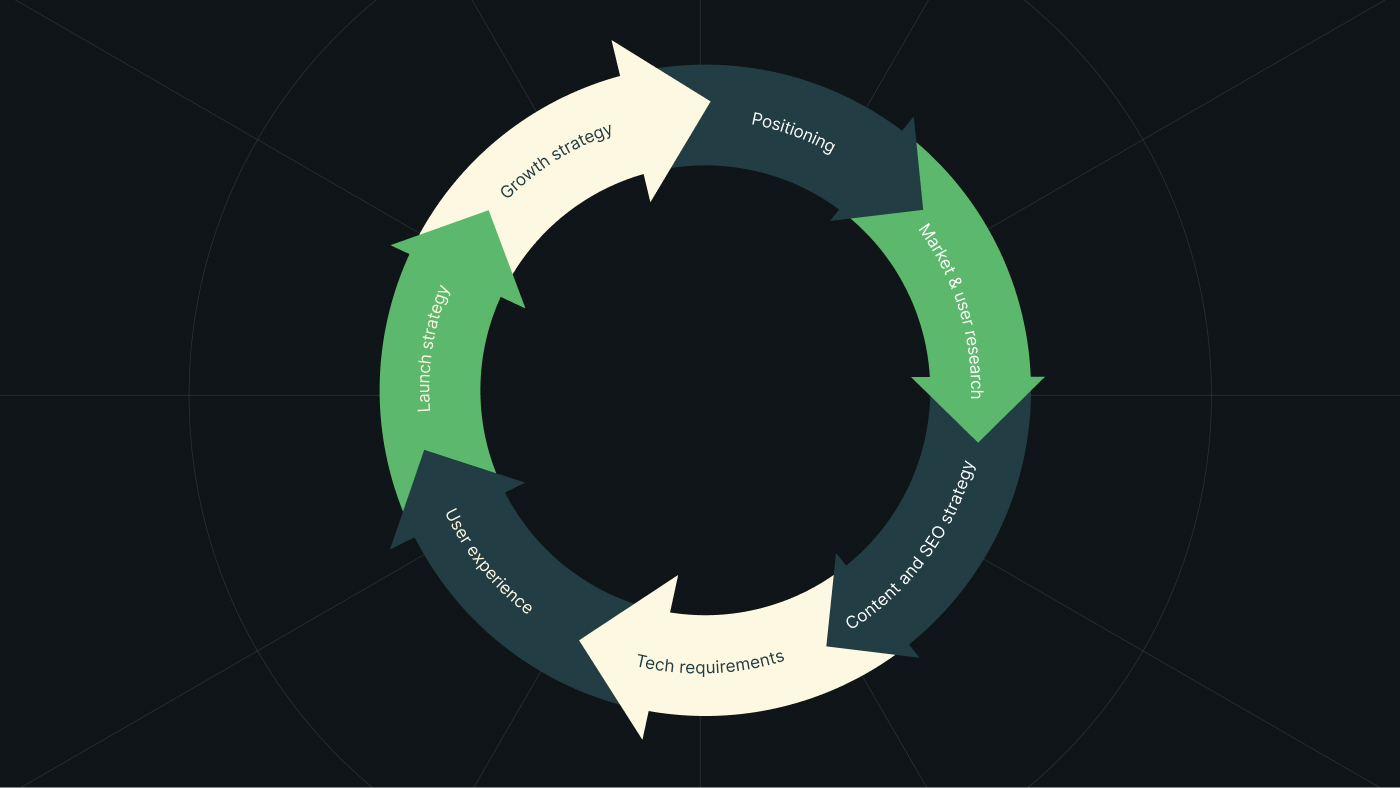
A website strategy is a plan that defines your website's business objectives, target audience, key messaging, and the specific approach you'll take to convert visitors into customers.
Notice what's not in that definition: colors, fonts, or whether the hero section should have a video background. Those are tactical decisions that should flow from strategic ones, not drive them.
Why do you need a website strategy?
Think of your website strategy as the architectural blueprint for a building. You wouldn't start laying the foundation without knowing whether you're building a single-family home or a 40-story office tower.
Yet most companies approach their websites exactly this way. They jump straight into design discussions without establishing the strategic framework.
Here's what happens when you skip strategy:
1. Decision paralysis during design and development. Without a clear strategic direction, every design choice becomes a debate.
Should the navigation have six items or seven? Should the pricing page come before or after the features page?
Without a website strategy, these decisions are made based on personal preference rather than user needs and business objectives.
2. Misaligned expectations across teams. Your marketing team wants lead generation, your sales team wants qualification tools, and your leadership wants brand elevation.
Without a unified strategy, you'll end up with a website that tries to do everything and excels at nothing.
3. Expensive redesigns every 18-24 months. When websites are built without a strategic foundation, they quickly become outdated, not because of technology changes, but because business needs evolve and the site can't adapt.
When you might need a website strategy
You need a website strategy if any of these sound familiar:
- You're launching a new website (obvious, but worth stating)
- Your current website isn't converting visitors into customers
- You're expanding into new markets or launching new products
- Your competitors are consistently outranking you in search results
- Your website looks professional, but feels disconnected from your business goals
- You're planning a rebrand or significant business pivot
- Your team can't agree on website priorities
The key insight? Website strategy isn't just for new builds. Some of our most successful partnerships at ThunderClap have involved the strategic repositioning of existing websites that were technically sound but strategically confused.
Step-by-step process to create a website strategy
Now let's dive into the strategic framework that separates high-performing websites from digital dead weight.
Step 1: Defining strategic position
Here's where most companies mess up: they jump straight to "we need a new website" without defining what business problem that website should solve.
Here's what to do:
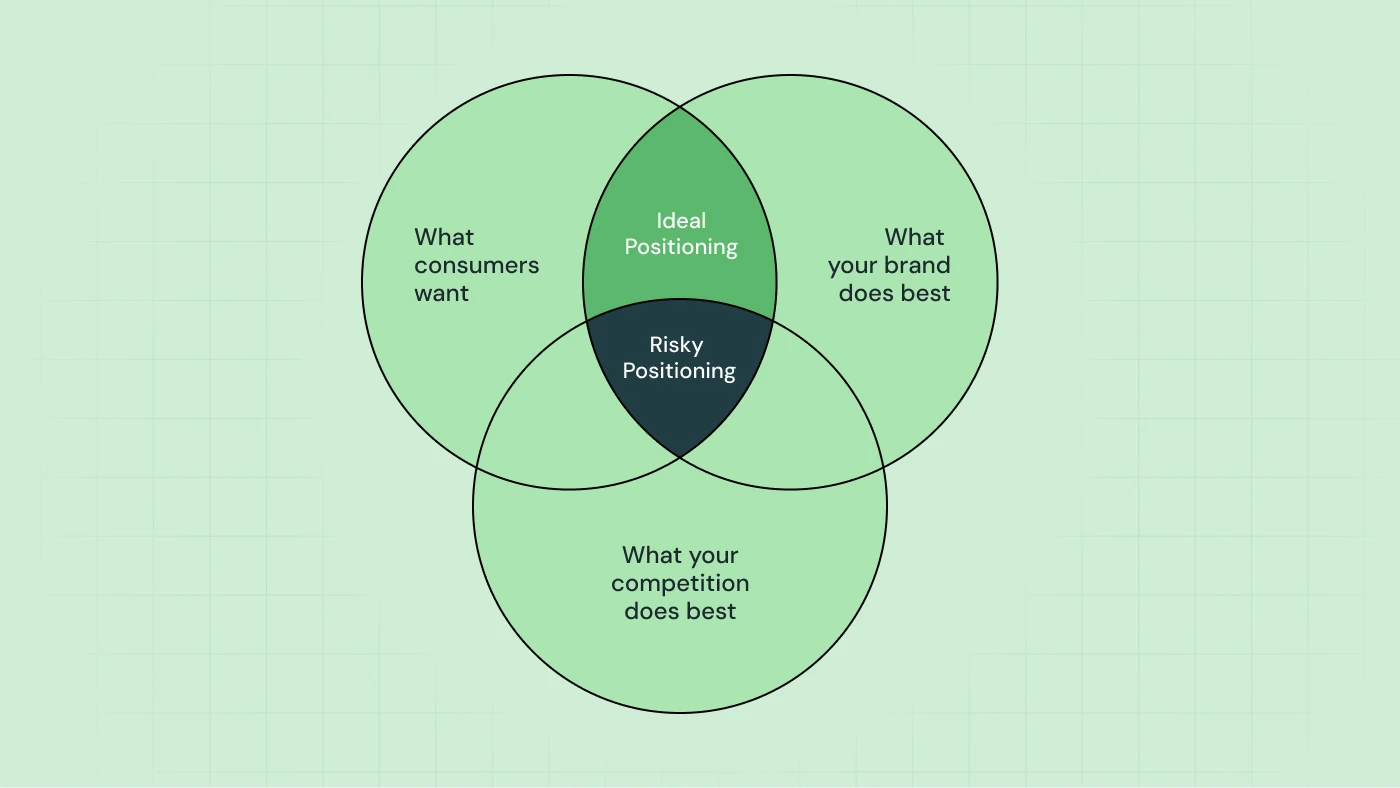
- Start with the specific business problem your website needs to solve.
Maybe your sales team spends too much time on unqualified leads, or prospects can't differentiate you from cheaper competitors.
Get clear on the exact challenge before thinking about solutions.
- Next, figure out how you're genuinely different from competitors. This isn't about being unique for the sake of it—it's about being different in ways that matter to your market.
Most B2B companies compete on innovation, operational excellence, customer relationships, or cost. Pick your lane and own it.
- Finally, define your online value proposition. What do you do, who do you do it for, and why should they choose you?
Your digital value prop might differ from your overall positioning because online visitors have different needs and shorter attention spans.
Step 2: Gather market and user intelligence
The biggest mistake we see? Making strategic decisions based on internal opinions rather than actual user research.
Your leadership team's preferences, while important for organizational alignment, are not a reliable proxy for market preferences.
Here's what to do:
- Get specific about your primary audience.
"Everyone" isn't a strategy; it's giving up. You might serve multiple segments, but optimize for the one that drives the most business value.
- Prioritize customer segments, not just by size.
Sometimes, smaller segments have higher lifetime value or shorter sales cycles.
Create a simple matrix weighing revenue potential, competitive advantage, and strategic fit.
- Research your competitive landscape beyond features.
Understand how competitors position themselves, what assumptions they make about buyers, and where market gaps exist.
The goal is to own a distinctive position in your prospects' minds.
At ThunderClap, we have seen client websites where teams assume certain pages are driving conversions, but analytics reveal completely different user behavior patterns.
We've found critical elements buried in places most visitors never reach, while key pages suffer from poor engagement because users can't quickly understand the value proposition.
This is why we start every website design project by interviewing stakeholders across sales, marketing, and product teams to uncover the gap between internal assumptions and actual user behavior.
Step 3: Determine your content and SEO strategy
Here's where companies get excited about beautiful content but forget the reality of managing and maintaining it. Planning content without considering operational requirements is expensive.
Here's what to do:
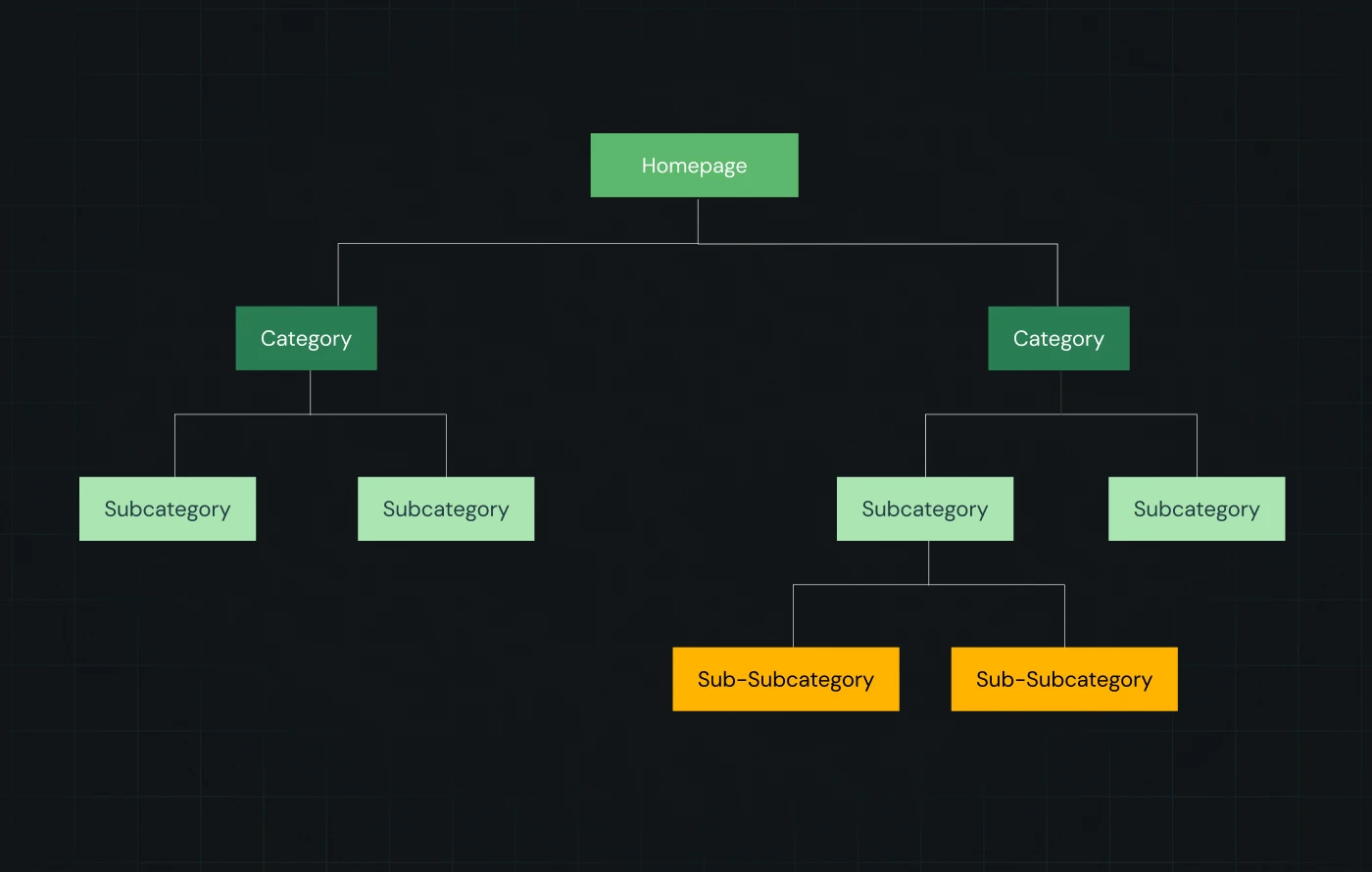
- Map out your site structure and information architecture based on how your customers actually search and navigate.
Determine what main categories, subcategories, and page types you need. Plan your URL structure to be logical for both users and search engines.
- Define your technical SEO requirements early.
Will you need multi-language support? Local SEO for multiple locations? E-commerce SEO features? Schema markup for rich snippets?
These decisions affect platform selection and development approach.
- Plan your content management workflow and governance.
Who will create, review, and publish content? How often will you update key pages? What approval processes do you need?
Determine what CMS capabilities and user permissions you'll require.
- Plan your content-to-conversion strategy by mapping content types to buying stages.
Every piece should advance prospects toward a business decision, with clear next steps and conversion mechanisms.
Step 4: Select your technology platform
The classic mistake: choosing technology before understanding what you actually need.
Here's what to do:
- Start with your strategic requirements, not feature lists.
For instance, if your strategy emphasizes rapid content updates and A/B testing, you need a platform that supports agile content management.
- Balance functionality with simplicity using the 80/20 rule.
Identify the 20% of features that will drive 80% of your business results, then optimize for those core capabilities.
- Plan for growth and integration needs.
Your website should integrate seamlessly with your CRM, marketing automation, customer support tools, and analytics systems.
On that note, Webflow has become the leading choice for top SaaS brands like Lattice, Dropbox, Docusign, and Zendesk because it combines enterprise-grade performance and security with unmatched design flexibility.
ThunderClap, being an award-winning Webflow development agency, can help you with Webflow design, development, maintenance, and migration support. Whether you're building from scratch or moving from another platform, we have got you covered. For more information, book a call with us!
Step 5: Design your user experience
User experience isn't about making things look pretty. It's about systematically removing friction from business-critical user journeys while reinforcing your positioning (from step 1).
Here's what to do:
- Map your primary user journeys from entry point to conversion.
Identify potential friction points and abandonment triggers, then design solutions that address user needs while advancing business objectives.
This might involve progressive information disclosure, contextual help, or intelligent form optimization.
- Create experience differentiation that reinforces your strategic positioning.
If your strategy emphasizes expertise, your UX should feel comprehensive and substantive.
If you compete on simplicity, your experience should feel effortless.
If innovation is your differentiator, your UX should feel advanced and forward-thinking.
- Optimize for specific conversions, not just general engagement.
Define what actions indicate business value—form submissions, content downloads, demo requests—then design systematic improvements that address both persuasion and friction reduction.
ThunderClap's UX approach includes comprehensive audits examining quantitative performance data and qualitative user feedback.
For example, when we worked with ClearlyRated, their website had significant UX friction points: users were spending only 14-15 seconds on pages, multiple conflicting CTAs (book demo vs. pricing) were creating decision paralysis, and critical social proof was buried on secondary pages.
Through comprehensive website and GA analysis, we discovered that key pages like "How it Works" were getting minimal traffic, while award registration forms were distracting users year-round despite being relevant only in February.
We streamlined the user experience by consolidating CTAs, redistributing social proof and testimonials across high-traffic pages, implementing sticky navigation, and strategically timing seasonal content.
The result was dramatically improved user engagement and clearer conversion paths that aligned with actual user behavior patterns.
Step 6: Plan your launch strategy
Most companies treat launch as flipping a switch, ignoring the strategic coordination required to maximize impact and minimize risk.
Website launches are brand moments that either reinforce or undermine your market position.
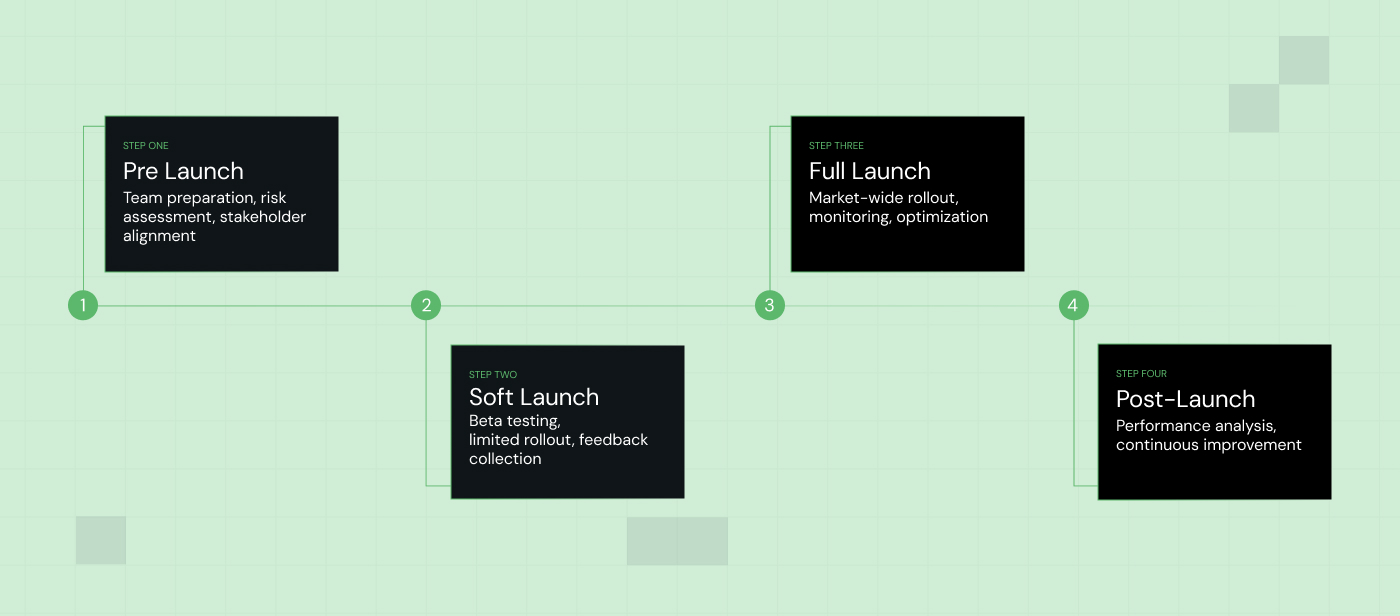
Here's what to do:
- Coordinate across all customer touchpoints, not just digital channels.
This includes sales team preparation, customer service training, partner notification, and stakeholder communication.
Your launch should feel like a cohesive business initiative, not an isolated project.
- Implement risk mitigation for technical failures, user experience issues, SEO disruption, and brand perception challenges.
This means performance testing under load, cross-browser compatibility verification, URL mapping for SEO preservation, and stakeholder preview processes.
- Consider soft launch approaches that allow real-world testing before full market exposure.
Beta testing with key clients, limited geographic rollouts, or specific audience targeting can reveal issues and opportunities that internal testing misses.
Step 7: Define your growth strategy
The most successful websites are never "finished"—they're continuously improved based on performance data.
Here's what to do:
- Establish performance measurement that connects website metrics to business outcomes, not just traffic statistics.
Focus on both leading indicators (traffic quality, engagement depth) and lagging indicators (revenue attribution, customer acquisition cost).
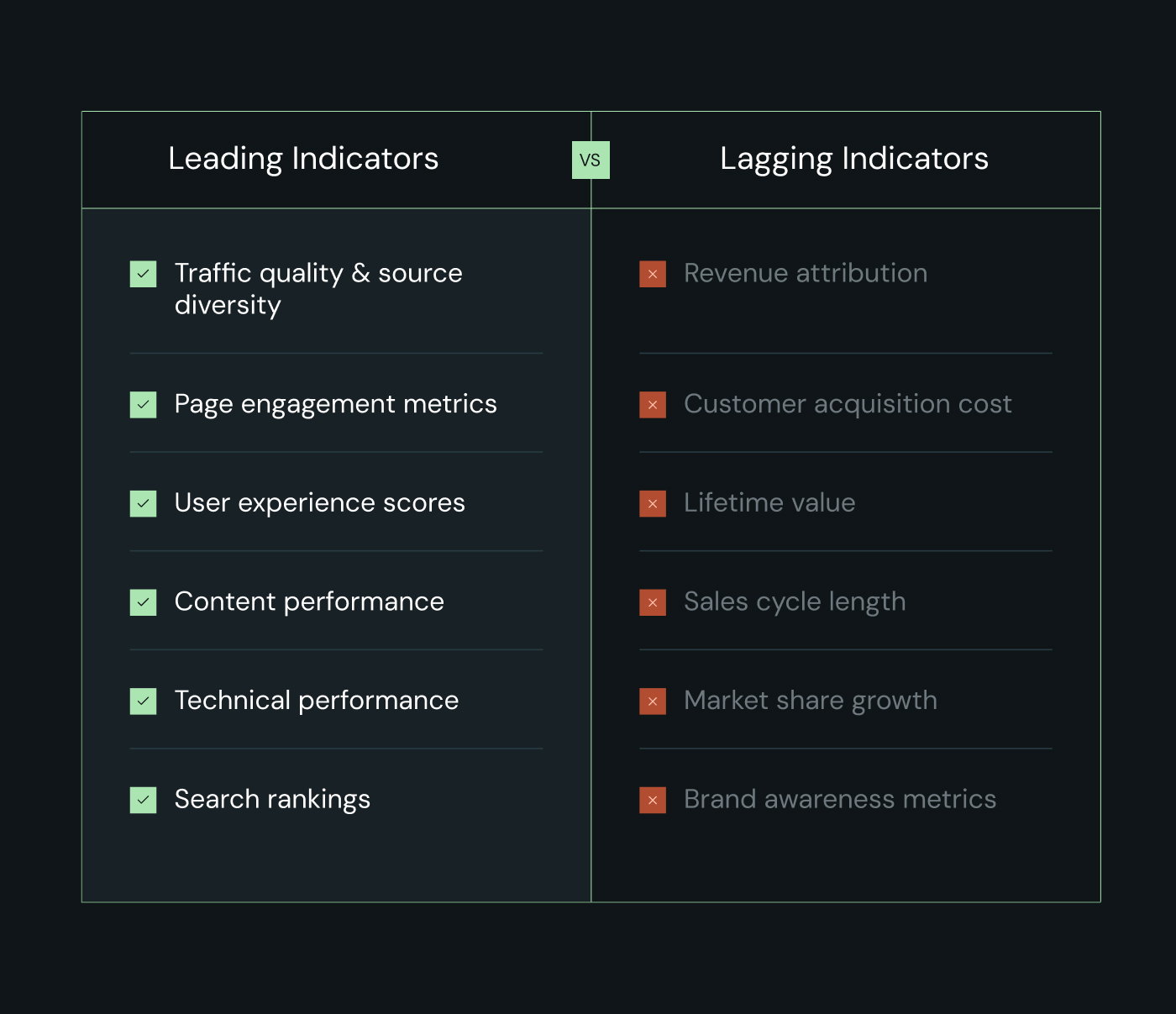
- Build systematic optimization cycles.
Your core positioning should remain stable while messaging, design, and user experience evolve based on performance data.
Establish regular testing programs, quarterly UX audits, and annual strategic reviews.
- Create adaptation mechanisms for changing market conditions, competitive landscapes, and customer expectations.
This might involve competitive monitoring systems, customer feedback processes, or industry trend analysis.
The goal is to maintain strategic relevance while preserving core positioning.
{{specficBlog}}
Common website strategy mistakes and how to fix them
Even with a solid framework, strategic planning can go wrong in predictable ways. Here are the most common mistakes we see companies make during website strategy development:
Mistake 1: Over-planning and analysis paralysis
The problem: Companies spend months perfecting strategy instead of testing assumptions with real users. They wait for "perfect" data that doesn't exist and create overly complex strategies that confuse rather than clarify.
Why it happens: Teams want certainty before making decisions, but most strategic assumptions can only be validated through market testing.
The result? Endless planning cycles that delay execution and miss market opportunities.

How to fix: We recommend using the Lean Startup methodology's Build-Measure-Learn cycle for strategy development.
Set a 4-6 week strategy sprint, make decisions with available data, then test your assumptions through rapid prototyping or user interviews.
Mistake 2: Creating strategy in isolation
The problem: Strategy gets developed in boardrooms without input from sales, customer service, or technical teams.
Why it happens: Strategy feels like a "leadership" responsibility, so other teams get excluded from the process.
But sales teams understand customer objections, support teams know common user problems, and technical teams understand what's actually possible.
How to fix: Interview stakeholders across all relevant teams before finalizing strategy. Validate key assumptions with actual customers through interviews or surveys, not just internal discussions.
Mistake 3: Copying competitors' strategies wholesale
The problem: Companies assume what works for competitors will work for them, without considering their unique business model, constraints, or market position.
Why it happens: Competitive analysis feels safer than original thinking, and feature comparison is easier than strategic positioning.
How to fix: Learn from competitors but don't copy them. Focus on understanding their positioning strategy, then find ways to differentiate based on your unique strengths and market opportunities.
Mistake 4: Setting unrealistic expectations
The problem: Teams promise immediate results from long-term strategic initiatives and underestimate the time and resources needed for strategic outcomes.
Why it happens: Stakeholders want quick wins, and it's tempting to overpromise to secure buy-in.
But website strategy delivers results through systematic optimization over time, not overnight transformation.
How to fix: Communicate realistic timelines upfront and educate stakeholders about what success actually looks like. Set both short-term milestones and long-term goals to maintain momentum and support.
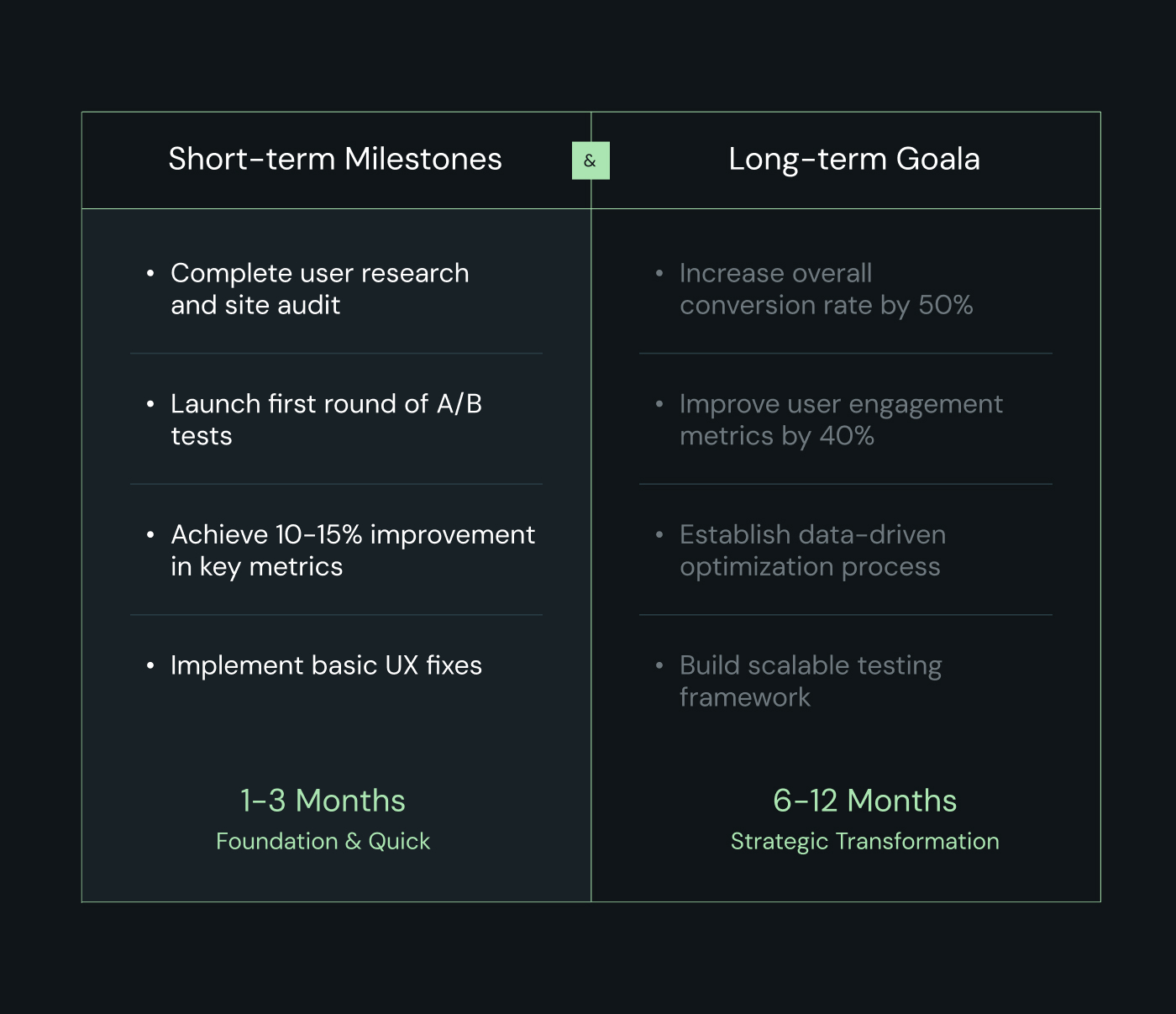
Mistake 5: Strategy without flexibility
The problem: Rigid strategies can't adapt when market conditions change, assumptions prove wrong, or new opportunities emerge.
Why it happens: Strategy feels like it should be "set and forget," but markets, competitors, and customer expectations evolve continuously. Static strategies become outdated quickly in dynamic business environments.
How to fix: Build regular strategy review cycles into your process. Explicitly identify key assumptions and test them systematically.
Create clear criteria for when and how to adapt the strategy based on new learning.
{{ctaBlock}}
What's next?
Now that you have a website strategy framework, the next step is execution.
You'll need to set up project management, assign team roles, configure your platform, create content, design wireframes, test with users, and prepare for launch.
That's where ThunderClap becomes your strategic partner. We specialize in end-to-end website transformation for mid-market and enterprise companies through messaging strategy, copywriting, UX design, development, Webflow integration, and conversion optimization.
We go beyond aesthetics to create websites that align with your business goals and scale your growth.
Book a call with us to discuss your project and see how we can help bring your strategy to life.


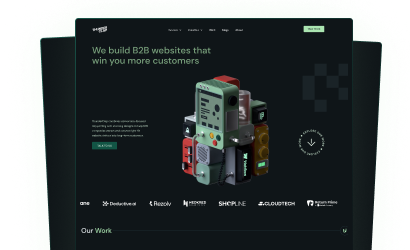




Interested in seeing what we can do for your website?

















.png)


